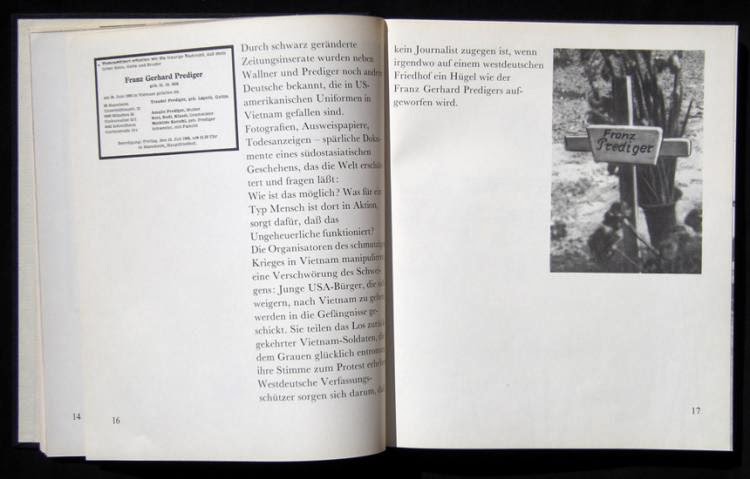Heynowski & Scheumann: Kannibalen (PARR/BADGER III)
*Kannibalen* was produced by two prominent East German documentary film makers about a West German mercenary called *Kongo* Mueller. It is probably one of the greatest (if not the greatest) anti-imperialistic propaganda books and is very much aimed at West Germany. It was *rediscovered* as a photobook by Thomas Wiegand in an article in Fotokritik: (http://www.fotokritik.de/artikel_88_1.html) Google does a pretty good job of translating it. *Kannibalen* is also one of the star attractions in the forthcoming third volume of the Parr and Badger History of the Photobook which has made it even scarcer and more expensive recently. One of the interesting bits about the book is that most of the photographs are NOT by Mueller but by Gerd Heidemann, who was a Stern Reporter. He is best known as the main engine behind the faked Hitler diaries which adds a surreal aspect to the whole show. It is sometimes referred to as a *protest* book which is slightly problematic This book was published in the DDR and all East German *protest* books were really devised, designed, and manufactured by the state to show their good citizens what a good place the East was compared to the West. Listed in Parr/Badger volume 3
"The world should know it!" - Heynowski & Scheumann : Cannibals (1967)
The book should be supplied with an instruction leaflet for the faint hearted. Cannibalism is a taboo, and the open display of violence is no less problematic. Photos of violent crimes and their victims are known from war and civil war or the Holocaust. The Scho-ckierende thing is that you first of all, it automatically goes off, that these images contain a kernel of truth. "The photographic image is by its very nature always concrete; moreover, it is always fraught emotional experience so promising as the abstract thought" (H & S 1966 zit.n. retrospective H & S 1976, p.49). The trium-phierende photographs of victims is a traditional action-wise, similar to the production of shrunken heads of slain enemies or of lampshades made of human skin.But the authors of the book did more to celebrate than a moral victory.
The book "cannibals" in 1967 received an award as one of the "most beautiful" books of the GDR. It is not really nice, rather scary. The reading promises to be a very special experience, even if the ironically downplaying subtitle reads: "A night-ländisches poetry album in autobiographies". It is directed it against the (of course) Western imperialism on the example of confusion surrounding the independence (1960) by the former Belgian Congo. In this civil war-like clashes, including West German mercenaries were in use, what 1964, the star and other West German newspapers had reported (Steinmetz / Prase 2002, p.72). The media treatment of the performance of the mercenaries in the Congo led to a grotesque German-German episode in the Cold War.


















































